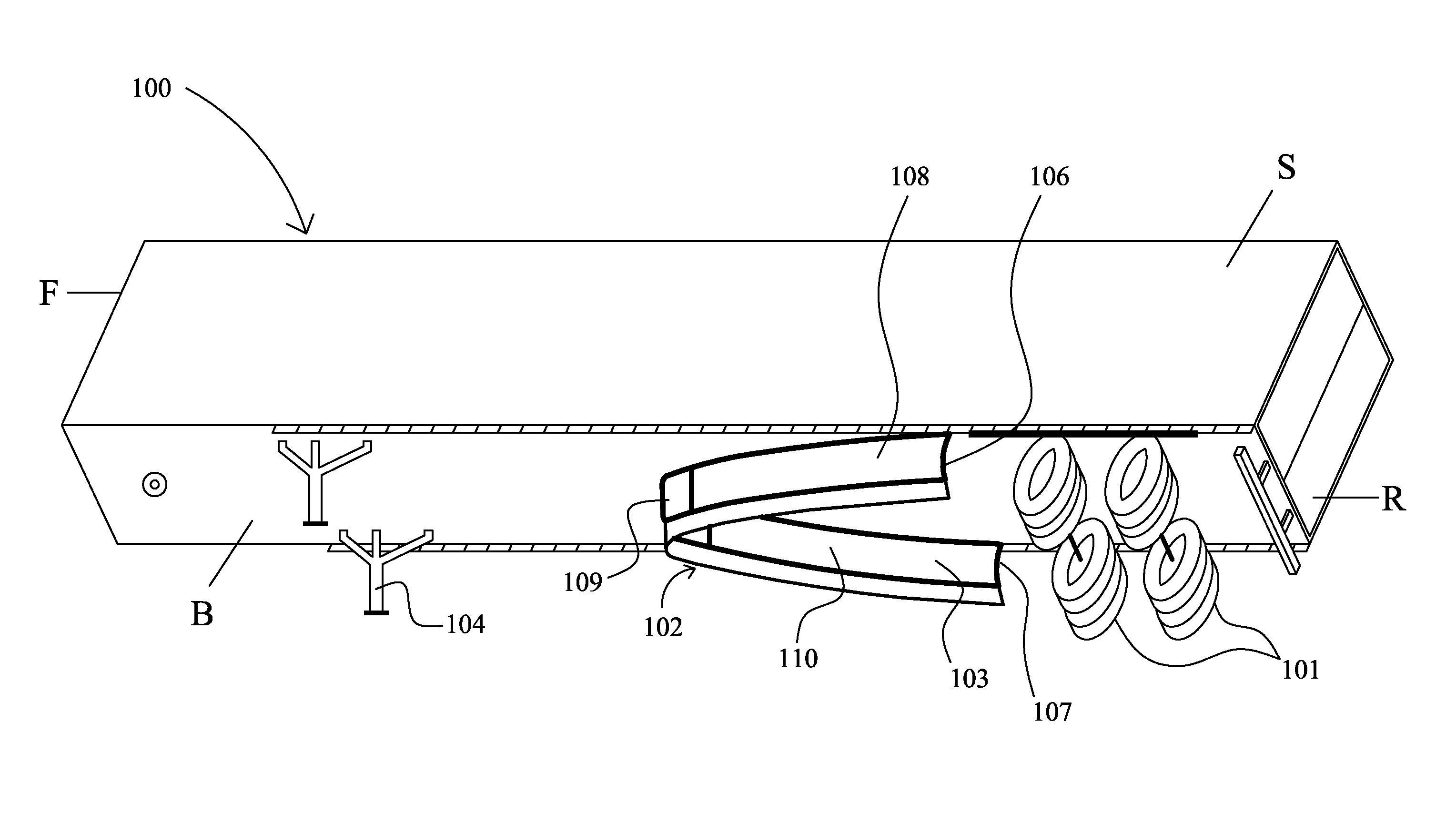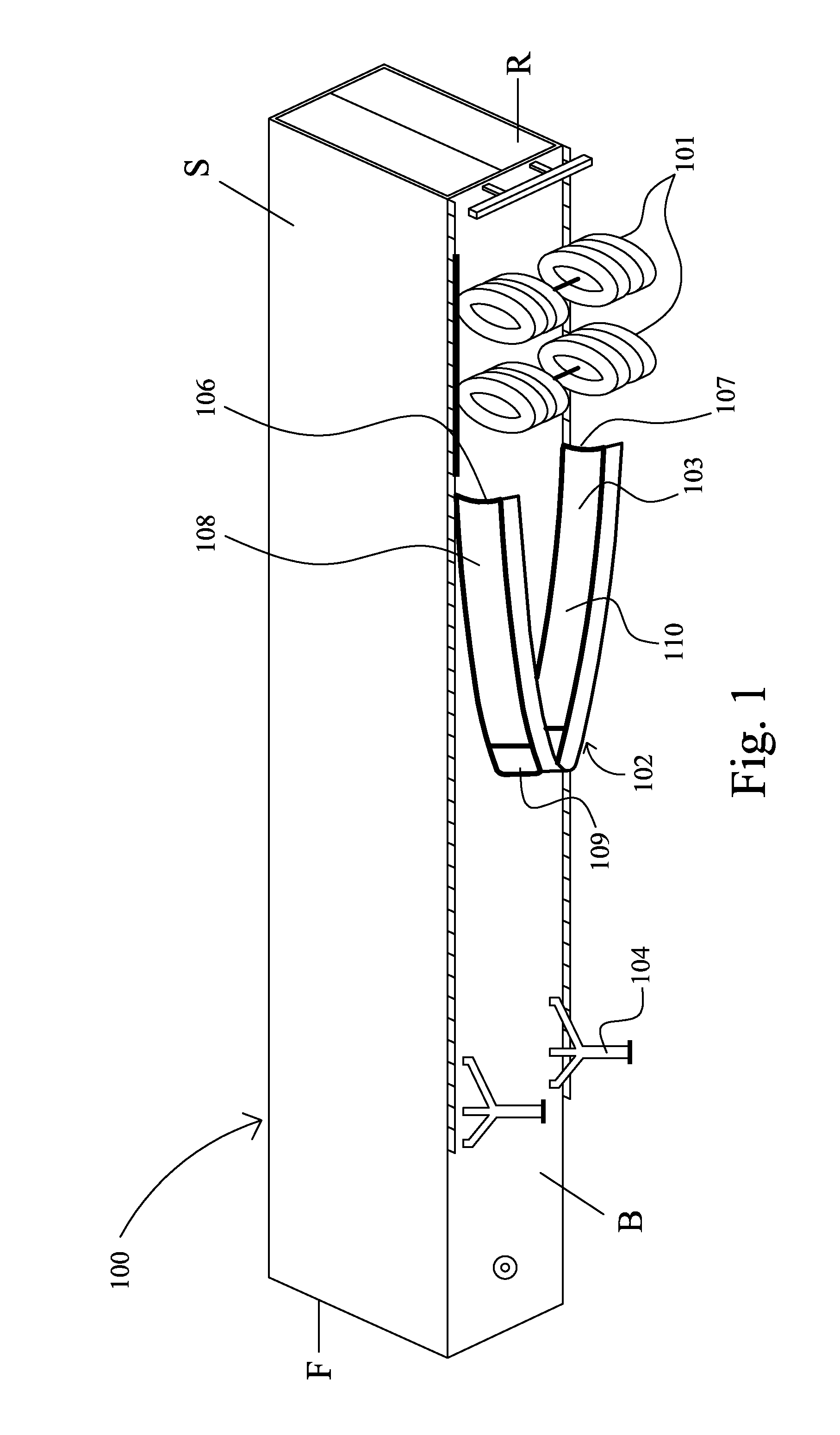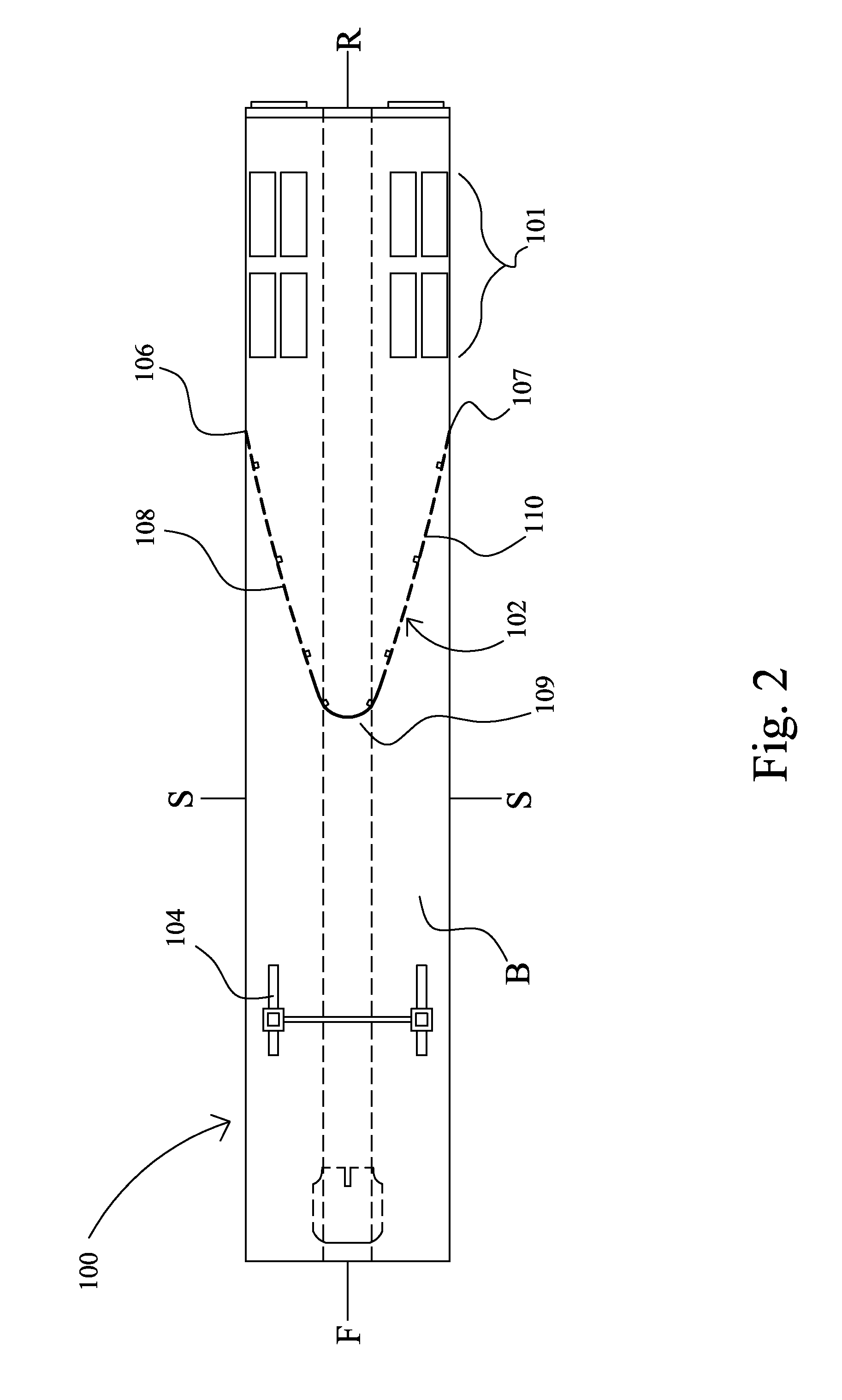Apparatus for decreasing aerodynamic drag, improving stability, and reducing road spray of a transport vehicle
a technology for transport vehicles and aerodynamic drag, applied in the field of land vehicles, can solve the problems of increasing fuel consumption, reducing fuel efficiency, and transport vehicles in motion experience significant aerodynamic drag, and achieve the effect of reducing aerodynamic drag on transport vehicles
- Summary
- Abstract
- Description
- Claims
- Application Information
AI Technical Summary
Benefits of technology
Problems solved by technology
Method used
Image
Examples
Embodiment Construction
[0056]The apparatus and method according to the present invention will typically be used in connection with transport vehicles having a front F, a rear R, a bottom B (i.e., underbody, undercarriage, underside), and opposing sides S. The transport vehicle typically has at least one front wheel assembly (i.e., a wheel assembly (i.e., combination of an axle, rims and tires) positioned near the front portion of the transport vehicle and substantially supporting the front portion of the transport vehicle) and at least one rear wheel assembly (i.e., a wheel assembly positioned near the rear portion of the transport vehicle and substantially supporting the rear portion of the transport vehicle). The rearmost front wheel assembly is that front wheel assembly which is nearest the rear of the transport vehicle. The frontmost rear wheel assembly is that rear wheel assembly which is nearest the front of the transport vehicle. The inside wheelbase is the distance from the most rearward axle of t...
PUM
 Login to View More
Login to View More Abstract
Description
Claims
Application Information
 Login to View More
Login to View More - R&D
- Intellectual Property
- Life Sciences
- Materials
- Tech Scout
- Unparalleled Data Quality
- Higher Quality Content
- 60% Fewer Hallucinations
Browse by: Latest US Patents, China's latest patents, Technical Efficacy Thesaurus, Application Domain, Technology Topic, Popular Technical Reports.
© 2025 PatSnap. All rights reserved.Legal|Privacy policy|Modern Slavery Act Transparency Statement|Sitemap|About US| Contact US: help@patsnap.com



